“My granddad loves his home, I never thought I’d see him so happy to move,” says Maomao (who prefers not to give her real name). Her family lives outside the Zhejiang city of Wenzhou in south-east China. Last year brought with it some huge changes for the family.
At the end of 2016, Maomao returned from studying overseas to help her grandparents move from Mabu town, where the family had lived for decades. The family felt compelled to move following a typhoon in autumn that transformed the area into a huge expanse of water.
“There was just no way we could keep living there,” says Maomao.
In September, Typhoon Megi, China’s 17th of the year, made landfall in southern Fujian, shattering historical rainfall records across Wenzhou. Water levels in the towns of Mabu and Shuitou reached 9.8 metres and 11.38 metres, respectively, setting new highs.
Pingyang county is used to flooding but this time the damage was so extreme that some residents decided they had had enough. Others had no choice but to stay in their waterlogged homes, despite the ongoing threat of severe flooding in future.
Rising waters
Maomao’s grandparents don’t remember much about how they coped with the worst 48 hours of the typhoon. On the morning of September 28 the rain just poured down, “almost by the bucket,” to the point where water levels in Mabu started to rise.
Maomao’s 84-year-old grandmother did what the locals always do when this happens. With difficultly she moved the refrigerator and gas cylinder up to the second floor along with all the electrical appliances.
People in Shuitou and Mabu are so used to flooding they refer to it as their homes becoming “full”. Maomao remembers typhoon season as a happy part of her childhood. The grown-ups enjoyed games of mah-jong upstairs while the children would play in the flooded streets.
“Back then it would only get ‘full’ up to your legs, so you just had to shift everything upstairs and it was fine,” says Maomao.
But this time was different. At about 5pm on the 28th the water level started to rise rapidly. “It rose another step about every five minutes.”
There wasn’t time to shift much of the furniture, which had to be abandoned. The water and power supplies were cut and the mobile phone signal faded in and out. The elderly couple spent two days and nights marooned on their own little “island”.
They weren’t the only ones. For two days, Mabu was a huge expanse of water, its residents taking refuge in any building with two or more storeys. Neighbours could see each other across the floodwaters but were unable reach each other.
Only after three days did the waters recede, leaving behind floors and streets caked in a foot or more of mud. “You’d step in with your rubber boots and not be able to get them out again,” says Maomao
Some people purchased fire hoses to pump water from the river to wash the mud away. Liu Fang (who chose not to give her real name) runs a clothing store and lost well over 100,000 yuan (US$14,500) of stock in the floods.
“I’d put everything up high, high enough a usual flood wouldn’t have got near it, but I didn’t know it was going to be this bad!” Appliances including a refrigerator and washing machine were unrepairable. She plans to close up shop and move away before the next typhoon season.
“We get flooded every year and the waters are getting higher and higher. There is no end to it!” she complained.
Much of the waste disposed of during the clean-up still remains uncollected in the streets.
Overall, the typhoon affected over 300,000 people in the county, caused more than 90 roads to collapse, and damaged 116,175 mu (78 square kilometres) of crops. Total losses were one billion yuan (US$150 million).
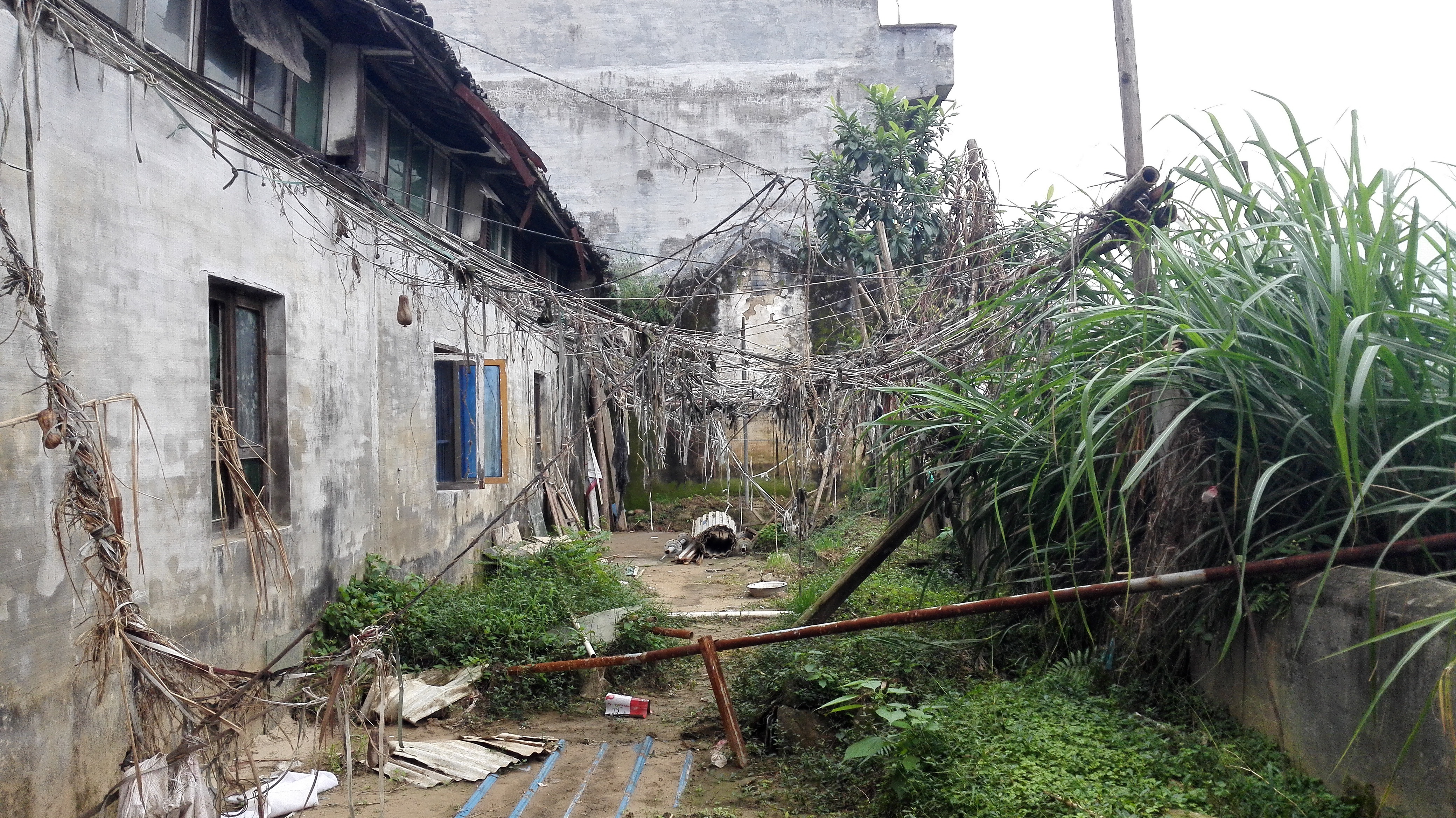
Damage from Typhoon Megi is still evident months after the floodwaters subsided (Image: He Linlin)
Unpredictable weather
“This year was really strange,” says Liu Feng, deputy head of the county’s meteorological bureau. “In a normal year a typhoon making landfall in southern Fujian wouldn’t have much impact here due to the distance. We hadn’t expected such a huge and concentrated downpour.”
Normally the high water mark from flooding is less than one metre high. Now it’s the height of a single storey building.
Over the last decade the hardware store run by Liu Nan (not his real name) has moved four times, always to higher ground. “We can’t let our metal goods get wet, so we have to move them higher up,” he says.
His store now sits at the highest point in the township. “Previous floods wouldn’t have got this far,” he says. But this year the floodwaters were high enough to flood his shop, too.
Li Qiwu, a local housing official, blames the flooding on the county’s location and the frequent and intense precipitation from extreme weather events. As for the cause of the freak downpours, experts agree that climate change is a major driver.
Zhang Jianyun, head of the Nanjing Hydraulic Research Institute and a member of the Chinese Academy of Engineering, says global warming is accelerating the water cycle, increasing evaporation from oceans and causing the atmosphere to become moister.
Liu Feng explains that moist, warm air is less stable and so more likely to give rise to downpours. More moisture also means heavier rainfall.
Another factor is the very strong El Niño effect, which lasted from 2014 to May 2016. “The unusual typhoon activity of the latter half of 2016 were consequences of the El Niño effect still playing out,” says Liu Feng.
The first half of 2016 saw record-breaking high temperatures around the world. “Decades-long climate trends are reaching new climaxes, fuelled by the strong 2015 and 2016 El Niño patterns,” said Petteri Taalas, secretary general of the World Meteorological Organization.
A vulnerable town
Residents in towns such as Shuitou are already accustomed to regular flooding. Most buildings have a first floor that is three to four metres high, with an upper floor, too. “That’s our special way of doing things here, if the floods get too high you can wait it out on the upper floor,” explains Liu Fang.
Kitchens are almost never placed on the ground floor either. “In a flood the things you can’t move, like the extractor hood and the oven, get soaked,” adds Liu Fang.
Although buildings have long been adapted to small scale flood events, land use planning needs to catch up.
“There have been more downpours and extreme weather events these past years, and it’s no longer appropriate to just keep expanding the town,” says Li Qiwu, the local building official.
Liu Jidong, head of the water management authorities for the county, admits that flood prevention measures are weak. Although towns such as Shuitou and Mabu can cope with average floods, they are unprepared for 1-in-20 year events where rainfall is higher than average. “There’s been too little investment. It’s a historical problem,” he explains.
The waterways between Shuitou and the River Ao have low embankments or none at all and often flood if rainfall is above average.
In places like Shuitou and Mabu, poor land use management has left the landscape less resilient to flooding. Waterways have been filled in to provide land for buildings, leaving less drainage for floodwaters.
The leather industry is an important part of Shuitou’s economy but many factories have been built in the flood zone. Areas of land that were not supposed to be developed so that floodwaters could disperse have shrunk by 2.1 square kilometres. These are now home to residential and factory buildings.
“There’s not even a decent river left. It’s all been filled in,” says Feng Li, head of the Pingyang flood prevention office. “They even built a middle school on the embankment.”
Xie Zuoxing, a local government official responsible for enforcing planning regulations, says that flooding wasn’t such an issue in the past. “As it wasn’t a problem, nobody was worried about solving it. The county bosses aren’t willing to spend money on something that is not a problem yet. Urban development has been much more focused on stimulating the economy.”
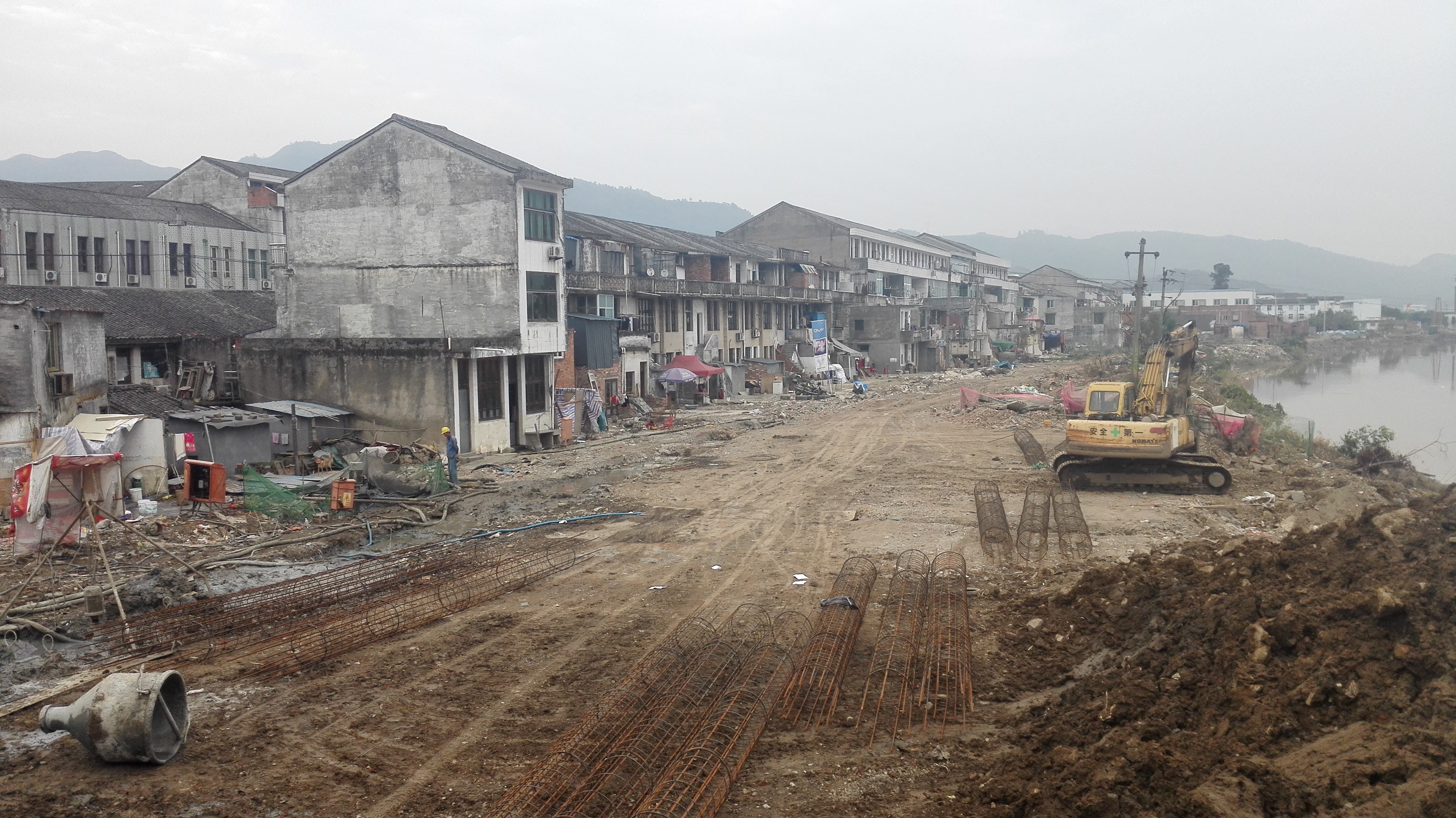
Local governments must factor climate change risks into local planning (Image: He Linlin)
Planning for climate change
Since the 1990s, extreme weather events have cost China 200 billion yuan (US$30 billion) a year on average.
Zou Tao, head of the Ecological City Institute at Tsinghua University, says that urban planning needs to account for the greater frequency of extreme weather events and be able to cope with catastrophic “low probability events.”
In recent years, a number of high-level plans and strategies have been released to guide action on the problem. The Action Plan for Urban Adaptation to Climate Change, an agreement published in early 2016 by China’s National Development and Reform Commission (NDRC) and the Ministry of Housing and Urban-Rural Development, calls on China’s cities to improve adaptation to climate through improved urban planning and better use of data.
In August 2016 the NDRC and the Ministry of Housing announced trials of climate-adapted urban construction in which 30 Chinese cities will participate.
China’s 12th Five-Year Plan also called for better adaptation planning. In November 2013, nine bodies, including the NDRC, ministries of Finance and Housing, and the Chinese Meteorology Administration, published the State Climate Change Adaptation Strategy.
An official with the NRDC’s climate change department, who contributed to the strategy, said that adaptation planning requires a systemic approach: “It needs to be considered in accordance with a range of fields; air and water policy, for example, involve adaptation.”
This requires cross-departmental cooperation and effective action across all levels of government.
As an example, Liu Feng points to the method for assessing climate risk for major urban projects published by the China Meteorology Administration in 2009.
“It was difficult to implement it at the local level because the order to use it was distributed among the meteorology authorities. As a county level bureau we can make suggestions and requests but we can’t force other departments to cooperate.”
When Liu Feng’s bureau suggested carrying out a climate risk assessment for a local wind farm in 2016, a large project that was important for electricity provision, there was no response.
Shao Yisheng, deputy head of the China Academy of Urban Planning and Design, says that climate change should be given greater weight in planning processes. As of 2015, the urban population accounted for 56.1% of China’s total population, or 770 million people.
He says that preparing Chinese cities for climate change impacts will require research into climate-change ready technical standards, better management systems, and more capability to adapt to and cope with extreme weather events.
In Pingyang, the need to mitigate climate change by reducing carbon emissions is discussed but the conversation on climate change adaptation remains unfamiliar for most government departments.
According to a local official in Pingyang, county leaders said in meetings after Typhoon Megi that they wanted to see flood prevention measures to cope with 1-in-50 year floods, much to the discomfort of the officials responsible. But Megi has shown that the risk of extreme weather events cannot be ignored.
Facing the prospect of similar floods in future, Maomao and her family have opted to leave the place they’ve lived for decades. But many people are staying. While local government must take the lead in adapting to climate change, this is also a process of raising awareness throughout society. In the words of the NDRC official, “the public’s attitude is also very important.”
Editor’s Note: This is the fourth part of our investigative series into adaptation projects in China. Explore the rest of the series here.
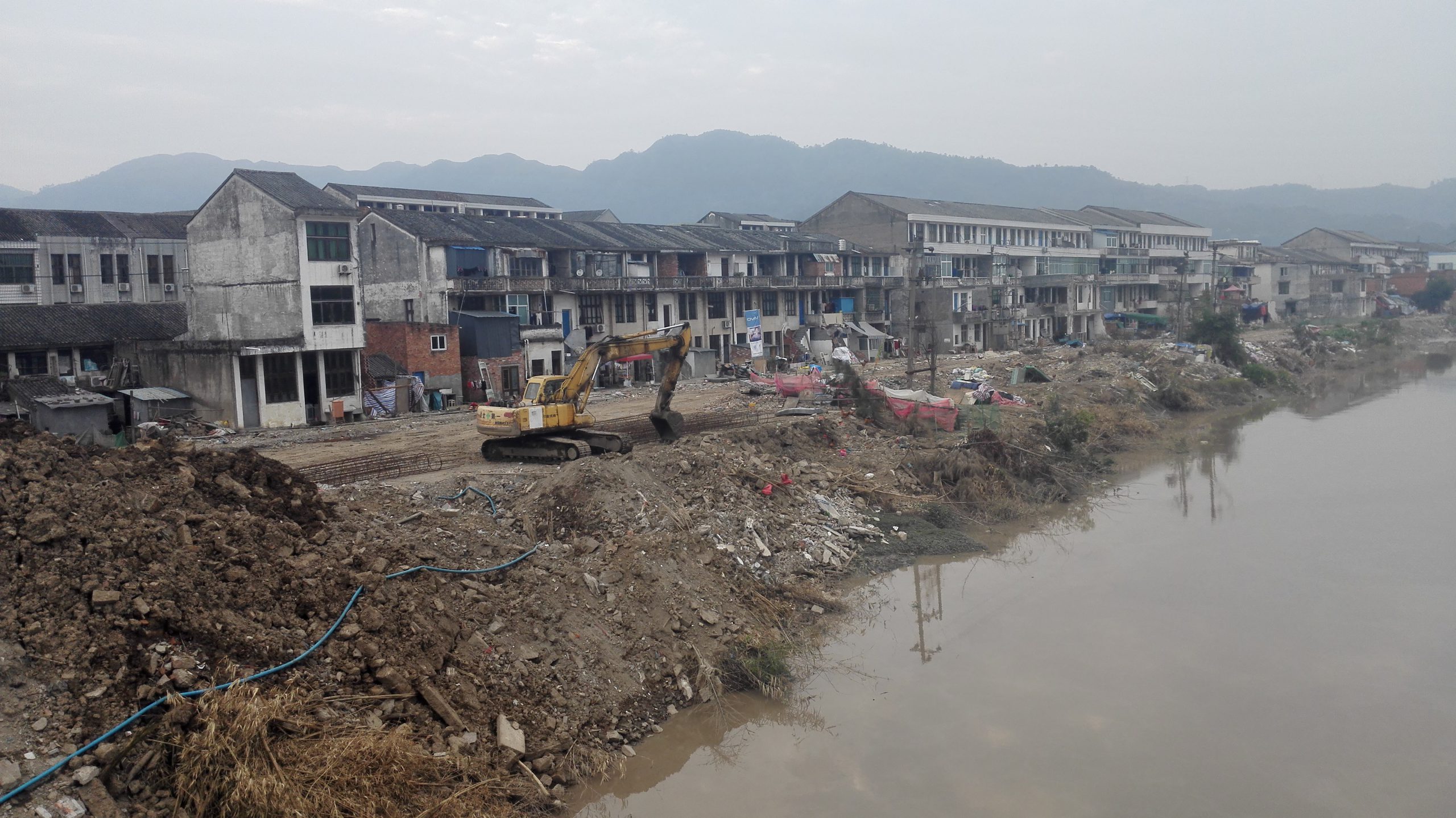
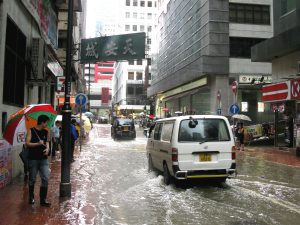
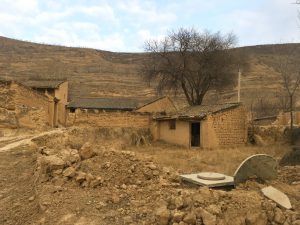

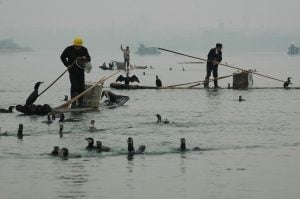
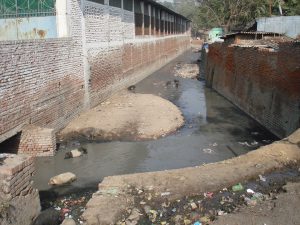
![[:ur]An avalanche, such as this one on Annapurna in Nepal, can be set off by a tremor as low as 2 on the Richter scale [image by Maureen Barlin] [:]](https://dialogue.earth/content/uploads/2017/02/Avalanche-300x200.jpg)

